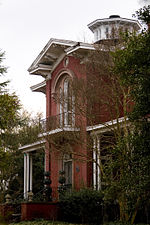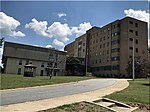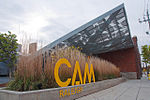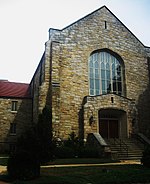Boylan Heights
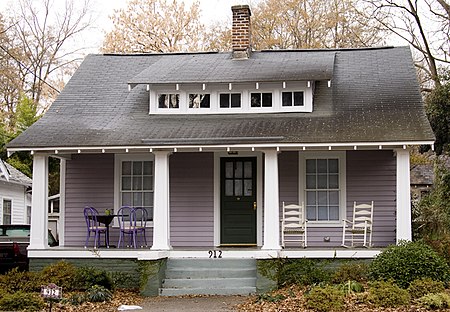
Boylan Heights is a historic neighborhood in Raleigh, North Carolina. It was added to the National Register of Historic Places as a historic district on July 29, 1985. It is also one of six local Historic Overlay Districts in Raleigh. Boylan Heights has been explored in the book Everything Sings: Maps for a Narrative Atlas by resident and critical cartographer Denis Wood, which maps the neighborhood in unusual ways. In the introduction to the book, Wood writes that these maps explore "other ways of thinking about [Boylan Heights] . . . as some sort of community, or as a marriage of community and place, or as those people in that place, their relationships, and their ways in the world . . . a life process." Maps include the location of jack-o'-lanterns on porches, radio waves permeating the air, the light from street lamps, and other attributes of Boylan Heights that cannot be mapped in a traditional way.The national historic district encompasses 252 contributing buildings and was developed between about 1907 and 1935. It includes notable examples of Queen Anne, Colonial Revival, and Bungalow / American Craftsman style architecture.Its name was used for the 1987 album Boylan Heights by The Connells. There is a restaurant named after the district in The Corner neighborhood of Charlottesville, Virginia.
Excerpt from the Wikipedia article Boylan Heights (License: CC BY-SA 3.0, Authors, Images).Boylan Heights
Cutler Street, Raleigh Warehouse District
Geographical coordinates (GPS) Address Nearby Places Show on map
Geographical coordinates (GPS)
| Latitude | Longitude |
|---|---|
| N 35.773888888889 ° | E -78.651944444444 ° |
Address
Cutler Street 568
27603 Raleigh, Warehouse District
North Carolina, United States
Open on Google Maps
